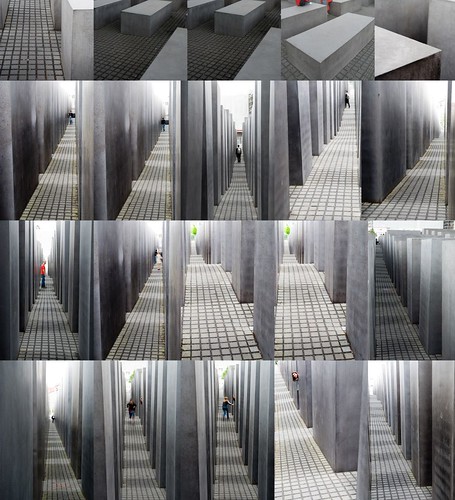The CNRS, the Gephi Consortium and the University of Aalborg… more
Archive for the “Reading” Category
Recap of the “Gephi Week” at SciencePo: inquiring the community detection algorithm of Gephi
Wednesday, September 7th, 2022Computer Arts interview
Wednesday, January 5th, 2011An interview for Computer Arts Magazine, about our design approach and research laboratory. Enjoy.
Jules & Jim
Friday, January 23rd, 2009Often love affairs are instable, fleeting and unpredictable. It seems… more
The traveller in the map
Monday, December 15th, 2008A close-up of the Earth Globe by Coronelli in which… more
Visual Literacy
Sunday, December 14th, 2008I read Kevin Kelly article on New York Times magazine and I found the concept of Visual Literacy very interesting. Even if our society it is getting aware of the importance of visual language for our contemporary communication, visual language need more research to get to the point of being totally accepted in artefacts where traditionally we use text.
Numbers & Statistics, Biases & Emotions
Sunday, October 26th, 200827 August 2008
Michael Bond
http://www.newscientist.com/article/mg19926711.500-how-to-keep-your-head-in-scary-situations.html
This has led Slovic to suggest we need to imbue statistics with more emotional significance so that we take them to heart. “We learn how to deal with numbers from a young age as cold or abstract entities – to read them, add them, multiply them – but we don’t learn to think about how they represent reality in a way that conveys feeling and meaning. We need to think how to teach people to step away from their intuitive response, which is insensitive to magnitude, and think more carefully about what numbers represent.” […]
MURMUR – Call for Collaborators
Wednesday, October 22nd, 2008
Density Design Lab, Knowledgecartography.org and ovrflw, under the nom de plume Writing Acamenic English, are proud to annouce that Murmur is one of the selected project for VISUALIZAR’08: DATABASE CITY.
Changing the change Paper
Friday, September 26th, 2008HANDLING CHANGES THROUGH DIAGRAMS
To change towards a more sustainable development could means to make decisions not only with a systemic approach, but also to be able to decide in the right time: the density. It seems that, when the discipline of Design integrate a systemic approach with the competences of designers in visualization, it can cope with dense situations, providing effective artefacts – diagrams – to improve the decision process and making profit from the richness of complexity.
The inside diagram
Wednesday, September 10th, 2008The traditional monument is understood by its symbolic imagery, by what it represents. It is not understood in time, but in an instant in space; it is seen and understood simultaneously. Even in traditional architectures such as labyrinths and mazes, there is a space-time continuum between experience and knowing; one has a goal to work one’s way in or out.
Experience & Imagination
Wednesday, September 3rd, 2008Knowing Complex Systems. The limits of understanding
Due to their non-linear nature, complex systems are incompressible. They are also open systems and cannot be understood without also understanding their environments and their history. To fully know something complex will therefore involve incorporating all the complexity of the system and its environment. This not humanly possible, perhaps not even possible in principle. Thus, our models of complex systems always have to reduce the complexity. Since what is left out also has non-linear effects, we cannot predict the error made in the reduction. The modelling and understanding of complex system thus always involve an element of choice which cannot be justified by pure calculation. There is always a normative element involved.
- Make 5 Sentences about Saying Disagreement
- Payment Agreement Sample Philippines
- Can Landlord Charge for New Tenancy Agreement
- Spirit Airlines Tax Receivable Agreement
- Ancillary Services Agreement
- Download Agreement by Shanko Rasheed
- Facebook User Agreement Photos
- Music Production Contracts Templates
- Do Contractors Do Financing
- Free Trade Agreement Russia
- Stock Purchase Agreement Good or Bad
- Terminating Employee Contract Early
- It Support Agreements
- Iran Nuclear Agreement Terms
- Rental Lease Agreement for Ct
- Tcode for Display Contract Status
- Contracts Manager Jobs in Bangalore
- Behavioral Health Contractors Association
- User Agreement in Arabic
- Rcuh Agreement for Services



